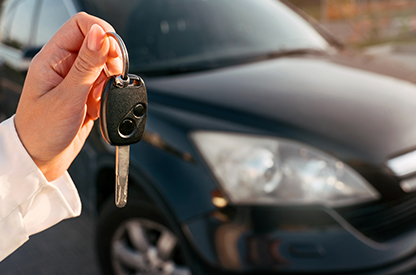What I recommend to my customers is to physically go and see the car that they are interested in. You can look online for cars until the cows come home, but until you actually go sit in that car, smell it, feel it, and drive it, you won’t really get a sense of the car itself. You also won’t be able to compare this car versus others until you drive many cars to get a true sense of what it is that you really like.
The first thing to do is take the car for a test drive. You want to drive it and go up to about 70 to 80 miles per hour on the highway and press the brakes gently. If the car shakes, it probably needs brakes and you can tell the dealer. By getting to a high range of speed you’ll feel the transition shift into overdrive. If the car is skipping, hiccuping, and not shifting smoothly then you should be aware that there may be some transmission issues. Also, while on the highway you can see if the car is pulling to the left or the right which will tell you if the car needs an alignment. Lastly, taking it out on bumpy roads and turning the wheel to the left and right will allow you to see if the shocks are in good shape or if there’s any issues with ball joints or anything around the suspension.
While inspecting the car, you want to look at the tire tread which will allow you to see how they’re wearing on the inside and outside, and how much life is left on the tires. This will help you negotiate a lower price or maybe have the dealer put on your tires. In most states, there are standards for how much tire tread is left in order for it to pass inspection.
When sitting in the car you want to do the sniff test. Begin by running the vents and see if there’s any kind of musty, smokey scent to determine if the car has been smoked in. You want to run the AC and heat, and also open and close the windows, to make sure all of these components are working properly. Turn on the front and rear defroster to ensure that if needed the windows can be defrosted. If there’s a sunroof, you want to open it and make sure it works. You also want to make sure there are no leaks around the sunroof by looking at the headliner to see if there are any watermarks. If there are, it could be a sign that there was prior water damage.
Lastly, open the hood and look for any glaring signs of leaks. Turn the car on and listen to the engine to hear how it sounds, paying close attention to any unusual noises. Once you listen to a few engines you can distinguish between a normal sounding engine and one that may have some knocks and pings.
Many of my brokerage customers are new and used car customers and these are the tips I provide them with. While I am not a mechanic, these are some great things to keep an eye out for when looking for a new car.
What To Look For When Buying a Used Car?

